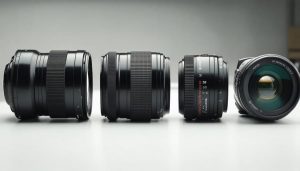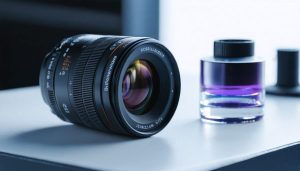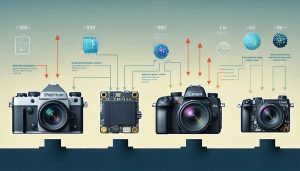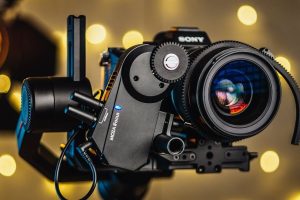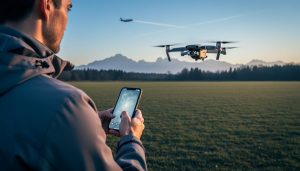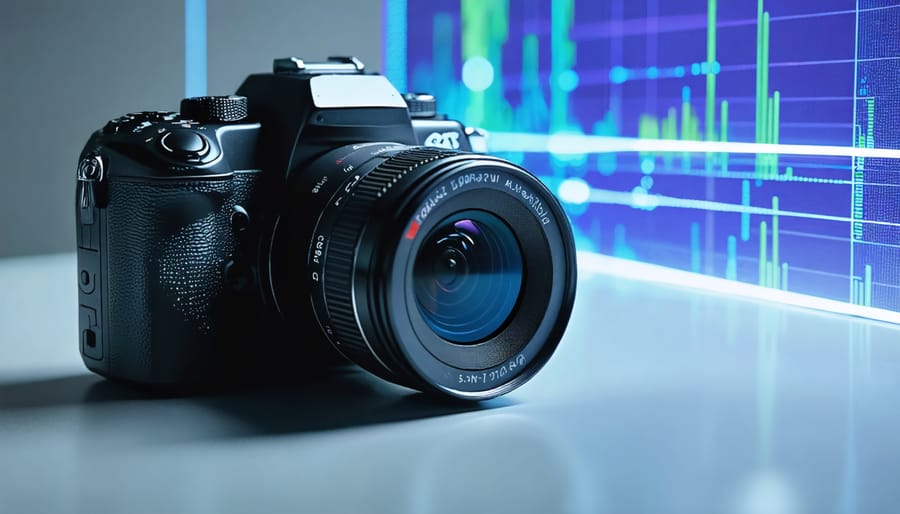
Depth-sensing cameras are revolutionizing how we perceive and interact with the digital world. Unlike traditional cameras that capture flat images, these sophisticated devices create detailed three-dimensional maps of their surroundings by measuring the distance to every point in their field of view. Using advanced technologies like structured light, time-of-flight sensors, and stereoscopic imaging, depth-sensing cameras have become integral to applications ranging from smartphone facial recognition to autonomous vehicle navigation.
What makes these cameras particularly fascinating is their ability to understand spatial relationships in real-time. By projecting invisible infrared patterns or using multiple lenses to capture different perspectives, they can construct accurate 3D representations of scenes and objects instantly. This technological breakthrough has opened up possibilities that seemed like science fiction just a decade ago – from precise gesture control in gaming to automated quality control in manufacturing.
For photographers and technology enthusiasts, depth-sensing cameras represent more than just another tool; they’re a gateway to new creative and practical possibilities. Whether it’s creating perfect bokeh effects in portraits, generating accurate 3D scans for digital modeling, or enabling augmented reality experiences, these cameras are fundamentally changing how we capture and interact with the world around us.
The Core Technology Behind Depth-Sensing
Active vs. Passive Depth Sensing
Depth-sensing cameras employ two distinct approaches to capture dimensional data: active and passive sensing. Active sensing systems, like structured light and Time-of-Flight (ToF) sensors, emit their own light or infrared signals to measure depth. Think of it as the camera playing a game of ping-pong with light – it sends out signals and measures how long they take to bounce back. While this method delivers precise results, it requires more power to generate these signals continuously.
In contrast, passive sensing works more like our own eyes, using multiple cameras to analyze differences between images to calculate depth. This approach, fundamental to modern 3D photography technology, consumes significantly less power since it doesn’t need to generate its own light signals. However, passive systems typically require good ambient lighting to function effectively.
The choice between active and passive sensing often comes down to specific use cases. Active systems excel in low-light conditions and offer higher accuracy, making them ideal for precise measurements and professional applications. Passive systems, while more energy-efficient, work best in well-lit environments and are commonly found in consumer-grade devices where battery life is a priority.
Key Components and Power Requirements
A depth-sensing camera relies on several key components working in harmony to capture accurate depth information. At its core, you’ll find an infrared (IR) projector that casts thousands of invisible dots onto the scene, paired with an IR sensor that detects how these dots are displaced. This combination typically draws between 1-3 watts during active use, making it relatively energy-efficient.
The main imaging sensor, usually a high-quality CMOS or CCD unit, requires about 0.5-1 watt of power. Supporting these components is a dedicated image processor that handles the complex calculations needed to generate depth maps, consuming approximately 2-4 watts depending on the processing load.
Most modern depth-sensing cameras also include an RGB sensor for capturing color information, adding another 0.5-1 watt to the power requirements. The total system, including supporting electronics and memory, typically draws between 4-8 watts during normal operation.
For battery-powered devices, manufacturers often implement power-saving features like sleep modes and selective sensor activation. Some advanced models use AI-driven power management, activating full depth-sensing capabilities only when needed, which can reduce power consumption by up to 60% during casual use.
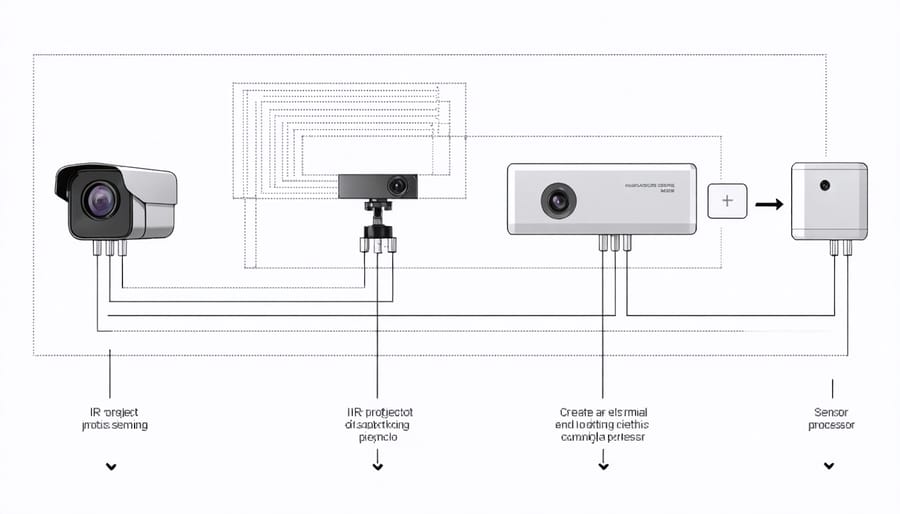
Energy-Efficient Design Innovations
Smart Power Management Systems
Modern depth-sensing cameras are evolving rapidly, with groundbreaking camera innovations focusing on power efficiency without compromising performance. Today’s smart power management systems employ several clever strategies to minimize energy consumption while maintaining optimal functionality.
One of the most effective approaches is adaptive power scaling, where the sensor automatically adjusts its power consumption based on the scene complexity and lighting conditions. For instance, when capturing a static scene, the system can reduce its sampling rate, consuming significantly less power than when tracking fast-moving subjects.
Time-of-flight sensors now incorporate intelligent sleep modes that activate between captures, reducing standby power consumption by up to 80% compared to earlier models. These systems can wake up almost instantly when needed, ensuring you never miss a shot while preserving battery life.
Many manufacturers have also implemented zone-based activation, where only the required sensor areas are powered up. Imagine you’re photographing a portrait – the system might focus power on the central region where your subject is located while reducing power to peripheral areas.
Advanced processing algorithms play a crucial role too. Modern depth sensors use efficient computational methods that require fewer calculations to achieve the same depth accuracy. Some cameras even employ AI-powered chips that can process depth data using minimal power, extending battery life while maintaining high-quality results.
For photographers working in the field, these power-saving features translate to longer shooting sessions and more reliable performance, especially in challenging environments where power sources might be limited.
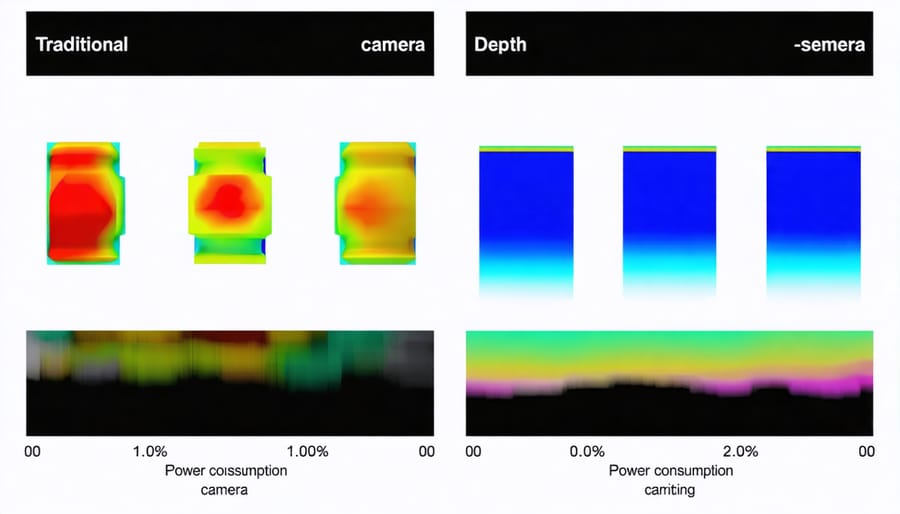
Efficient Processing Algorithms
Modern depth-sensing cameras rely on sophisticated algorithms that maximize efficiency without compromising accuracy. These smart processing techniques help reduce power consumption while maintaining high-quality depth mapping, making them ideal for both professional and consumer applications.
One key optimization is temporal filtering, which compares consecutive frames to identify and process only the areas that have changed. Imagine you’re filming a static scene with one moving subject – the camera only needs to recalculate depth information for the moving elements, significantly reducing computational load.
Another breakthrough is adaptive resolution processing. The algorithm automatically adjusts the processing resolution based on scene complexity. In areas with simple geometry, like flat walls, it uses lower resolution calculations, while detailed objects receive higher resolution attention. This smart allocation of processing power ensures resources are used where they’re needed most.
Multi-threading and parallel processing techniques also play a crucial role. By dividing depth calculations across multiple processor cores, these cameras can handle complex scenes more efficiently. Modern systems even employ predictive algorithms that anticipate where movement might occur, preparing processing resources in advance.
Edge detection optimization is another clever approach. By identifying object boundaries first, the camera can focus detailed depth calculations on these crucial areas while using simpler calculations for uniform surfaces. This selective processing strategy dramatically reduces the overall computational burden while maintaining depth accuracy where it matters most.
These optimizations work together to ensure depth-sensing cameras can operate efficiently in real-time applications while consuming minimal power.
Real-World Applications and Benefits
Professional Photography Applications
Professional photographers are increasingly embracing depth-sensing cameras to revolutionize their workflow while maintaining energy efficiency. These innovative devices allow photographers to capture not just traditional 2D images, but also precise depth information for each pixel, opening up new creative possibilities without draining battery life.
Portrait photographers particularly benefit from depth-sensing technology, as it enables precise subject separation and advanced bokeh effects in real-time, rather than relying on power-hungry post-processing techniques. The depth data allows for instant adjustments to focus planes and creative lighting effects, reducing the need for multiple shots and extended editing sessions.
Commercial photographers use depth-sensing cameras for product photography, where accurate measurements and 3D visualization are crucial. The technology enables them to capture detailed spatial information in a single shot, eliminating the need for multiple lighting setups and reducing both power consumption and studio time.
In architectural and real estate photography, depth-sensing cameras excel at creating detailed 3D walkthroughs while using significantly less power than traditional photogrammetry methods. Photographers can quickly capture spatial relationships and dimensional data without the need for multiple passes or external measuring devices.
The energy efficiency comes from the camera’s ability to process depth information using dedicated, low-power sensors rather than intensive computational photography. This approach not only extends battery life but also allows photographers to work longer sessions without sacrificing quality or creative control.
Mobile and Portable Device Integration
The integration of depth-sensing cameras into mobile devices has revolutionized how we capture and interact with images in our daily lives. Modern smartphones have embraced this technology, incorporating sophisticated miniature camera technology that includes multiple sensors and lenses working in harmony.
Leading manufacturers like Apple, Samsung, and Google have implemented depth-sensing systems in their flagship devices, enabling features like portrait mode photography, accurate face recognition, and enhanced augmented reality experiences. These implementations typically use a combination of infrared projectors, time-of-flight sensors, and traditional cameras to create detailed depth maps.
Portable cameras have also benefited from this technology’s evolution. Contemporary action cameras and compact systems now incorporate depth-sensing capabilities for improved autofocus, subject tracking, and creative effects. The technology has become increasingly energy-efficient, with manufacturers developing specialized processors and AI algorithms that optimize power consumption while maintaining high performance.
What’s particularly exciting is how these integrated systems have democratized advanced photography techniques. Features that once required expensive professional equipment are now accessible in devices that fit in our pockets. This accessibility has sparked a creative revolution, allowing casual photographers to experiment with depth effects and three-dimensional imaging in ways previously unimaginable.

Future Developments and Trends
As we look toward the future of camera technology, depth-sensing cameras are poised for some exciting developments. One of the most promising trends is the emergence of quantum dot sensors, which could dramatically reduce power consumption while improving depth accuracy. These innovative sensors can detect photons with unprecedented efficiency, potentially extending battery life by up to 40% compared to current solutions.
Miniaturization is another frontier that’s rapidly evolving. Engineers are working on microscopic depth sensors that could be integrated into smartphones and wearable devices without compromising device thickness or battery life. This advancement could make professional-grade depth sensing accessible to everyday users while maintaining energy efficiency.
Machine learning is set to revolutionize how depth-sensing cameras process information. Next-generation AI algorithms will enable real-time depth mapping with minimal power draw, making these devices more practical for continuous use in applications like autonomous navigation and augmented reality.
We’re also seeing interesting developments in hybrid sensing systems that combine traditional depth sensors with other technologies. For instance, some manufacturers are experimenting with systems that merge thermal imaging with depth sensing, providing more accurate results while sharing power resources more efficiently.
Perhaps most exciting is the development of organic photosensors, which promise to deliver superior depth-sensing capabilities while consuming minimal power. These bio-inspired sensors mimic the human eye’s ability to adapt to different lighting conditions, potentially reducing energy consumption by up to 70% compared to conventional sensors.
Industry experts predict that by 2025, we’ll see depth-sensing cameras that can operate for days on a single charge, thanks to advanced power management systems and more efficient processing algorithms. This evolution will make depth-sensing technology more accessible and practical for both professional and consumer applications.
As we’ve explored throughout this article, energy efficiency in depth-sensing camera technology represents a crucial advancement in modern photography. By optimizing power consumption while maintaining high performance, these cameras are becoming more practical for extended shooting sessions and mobile applications. The reduced energy footprint not only extends battery life but also makes these devices more environmentally sustainable and cost-effective for photographers.
The impact on photography has been transformative, enabling new creative possibilities while being mindful of resource consumption. From mobile devices to professional studio setups, energy-efficient depth-sensing cameras are proving that cutting-edge technology and sustainability can go hand in hand. As the technology continues to evolve, we can expect even more innovative solutions that balance exceptional image quality with responsible energy use, ultimately benefiting both photographers and the environment.
Looking ahead, this focus on energy efficiency will likely drive further innovations in depth-sensing technology, making these powerful tools even more accessible and practical for photographers at all levels.

